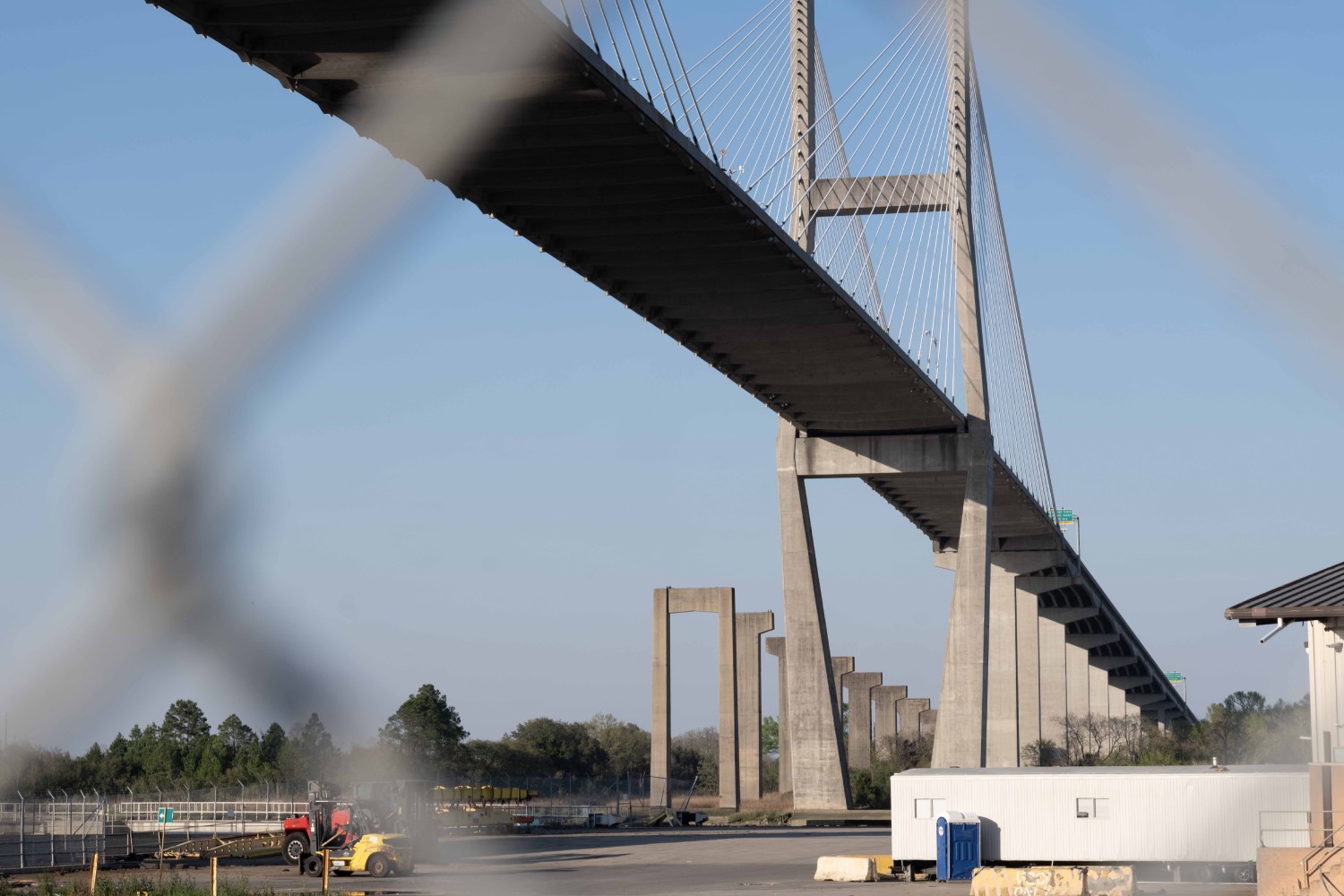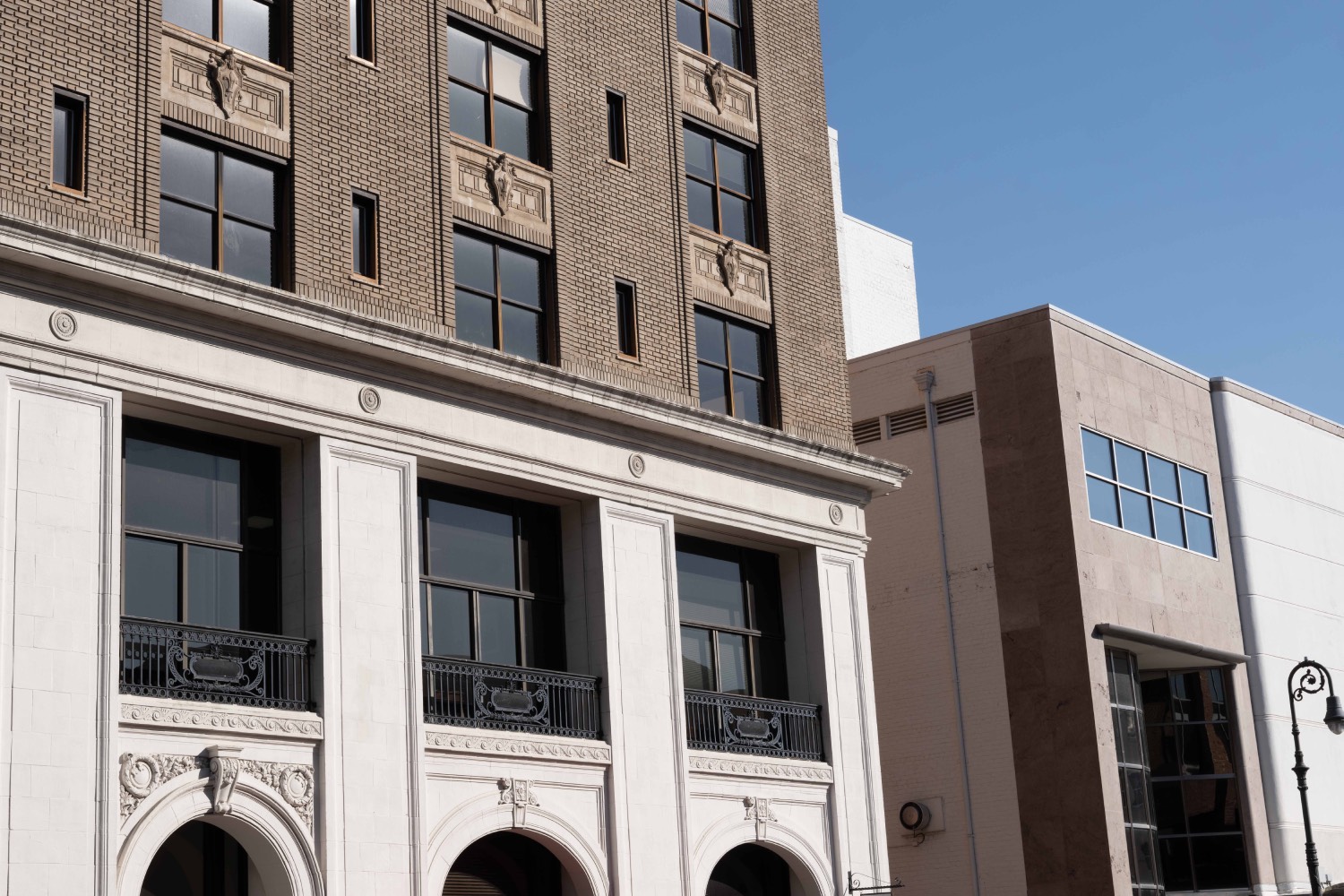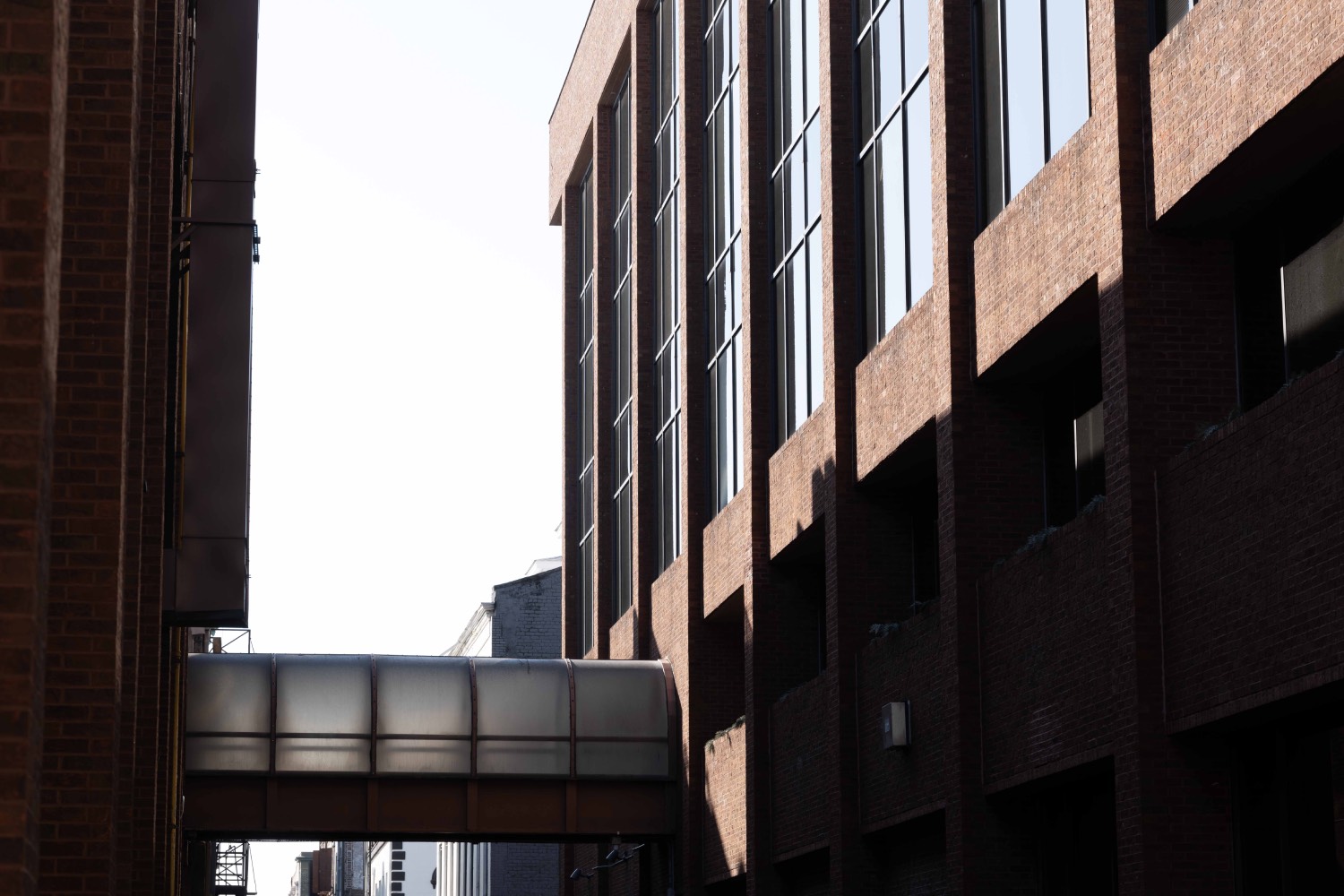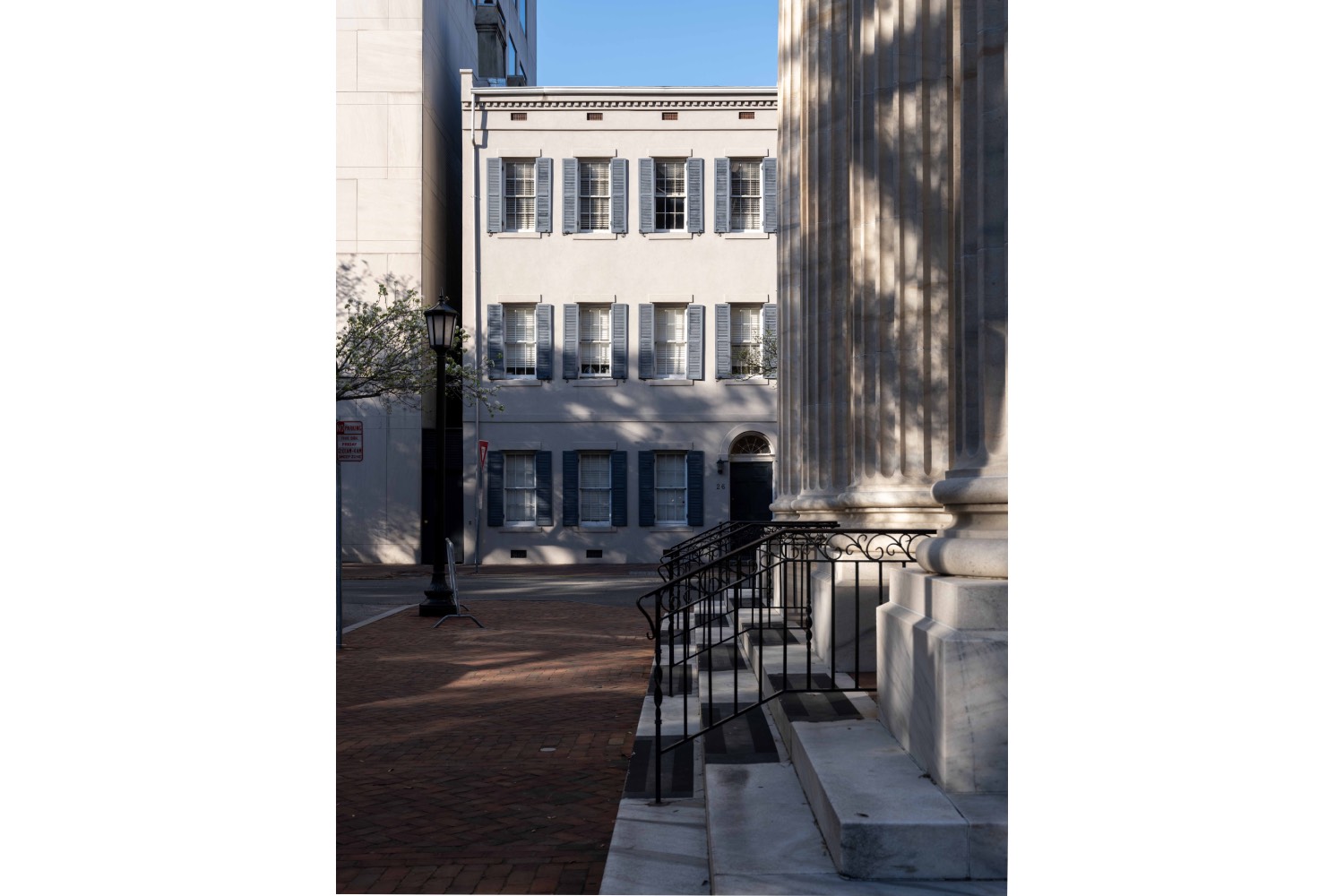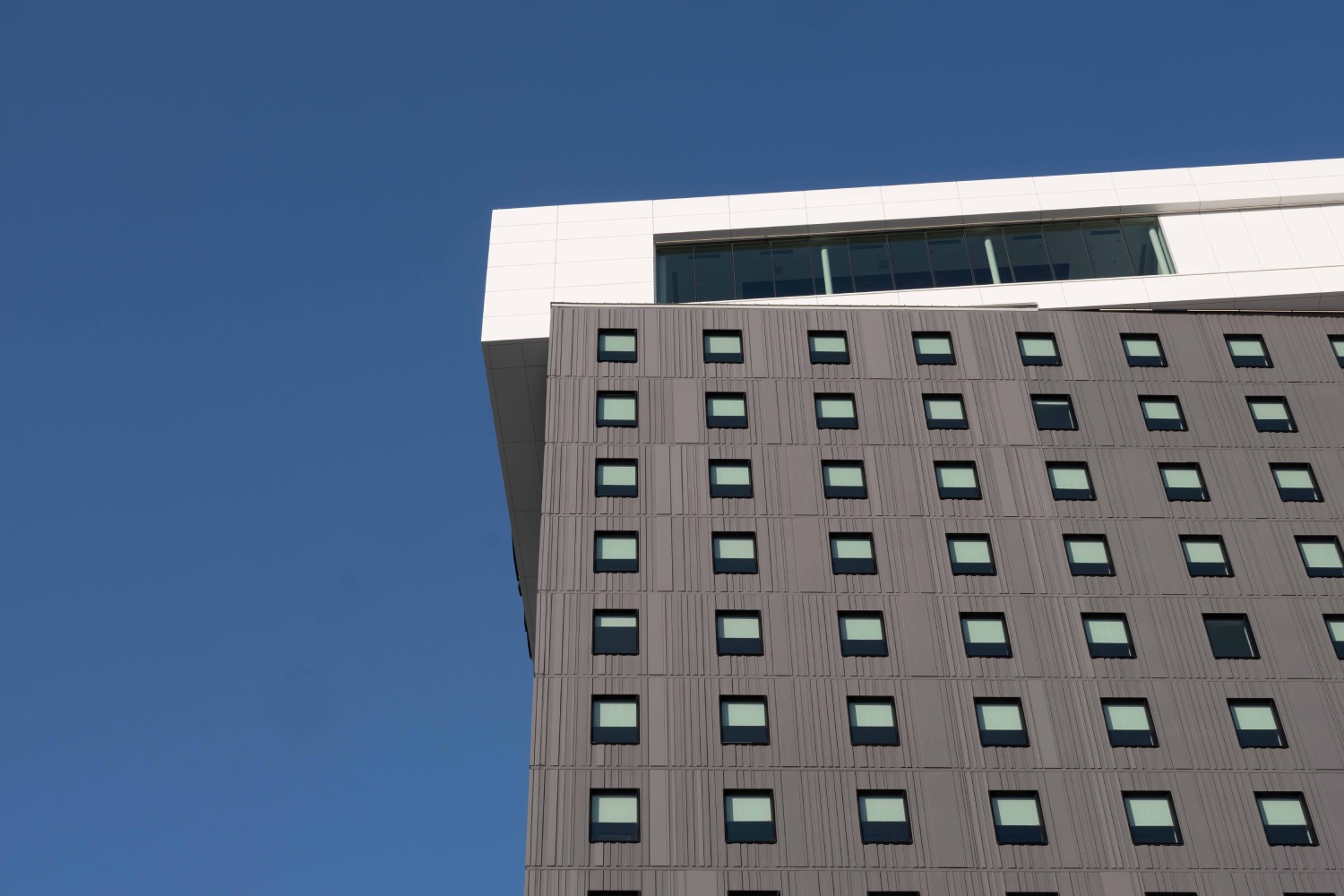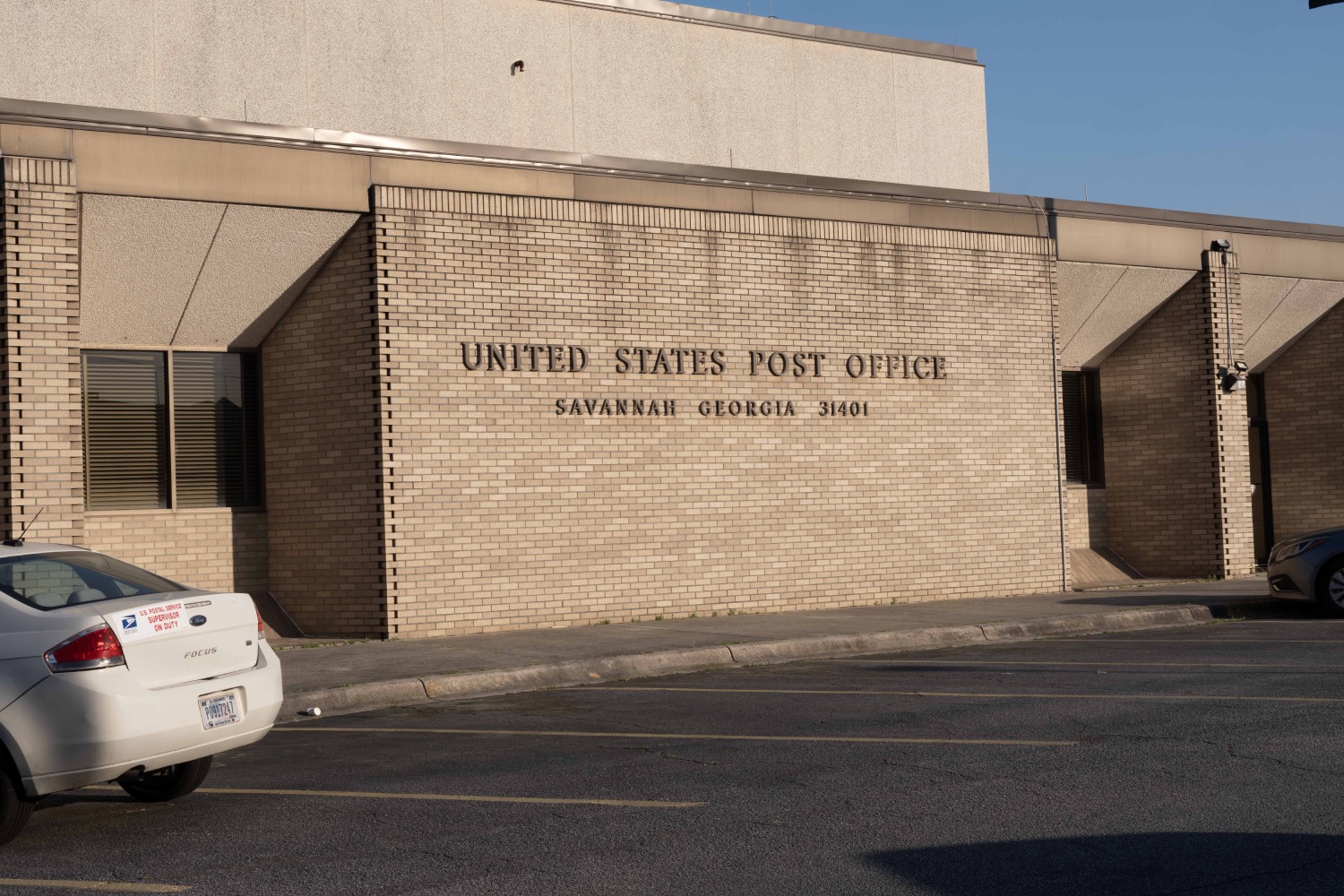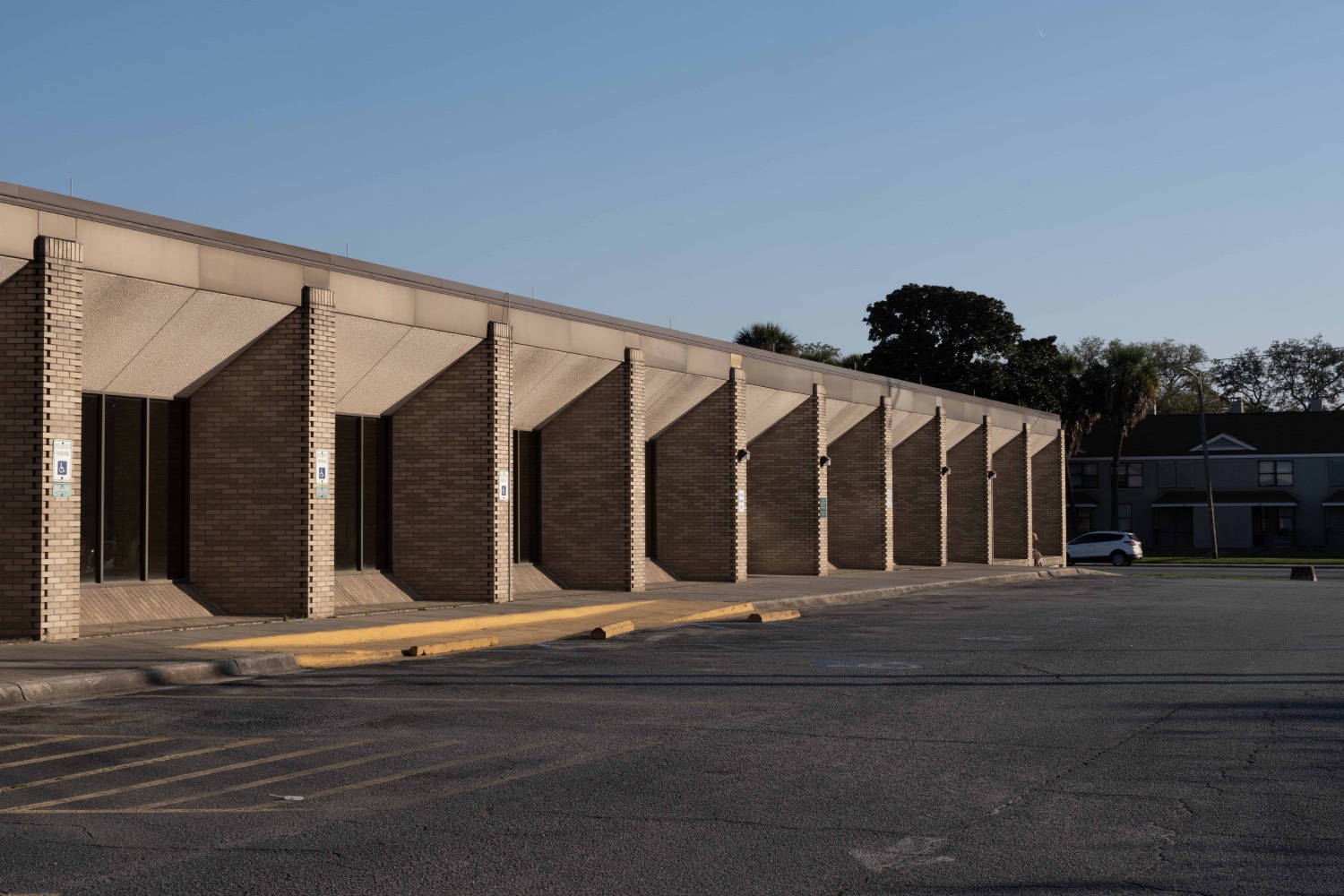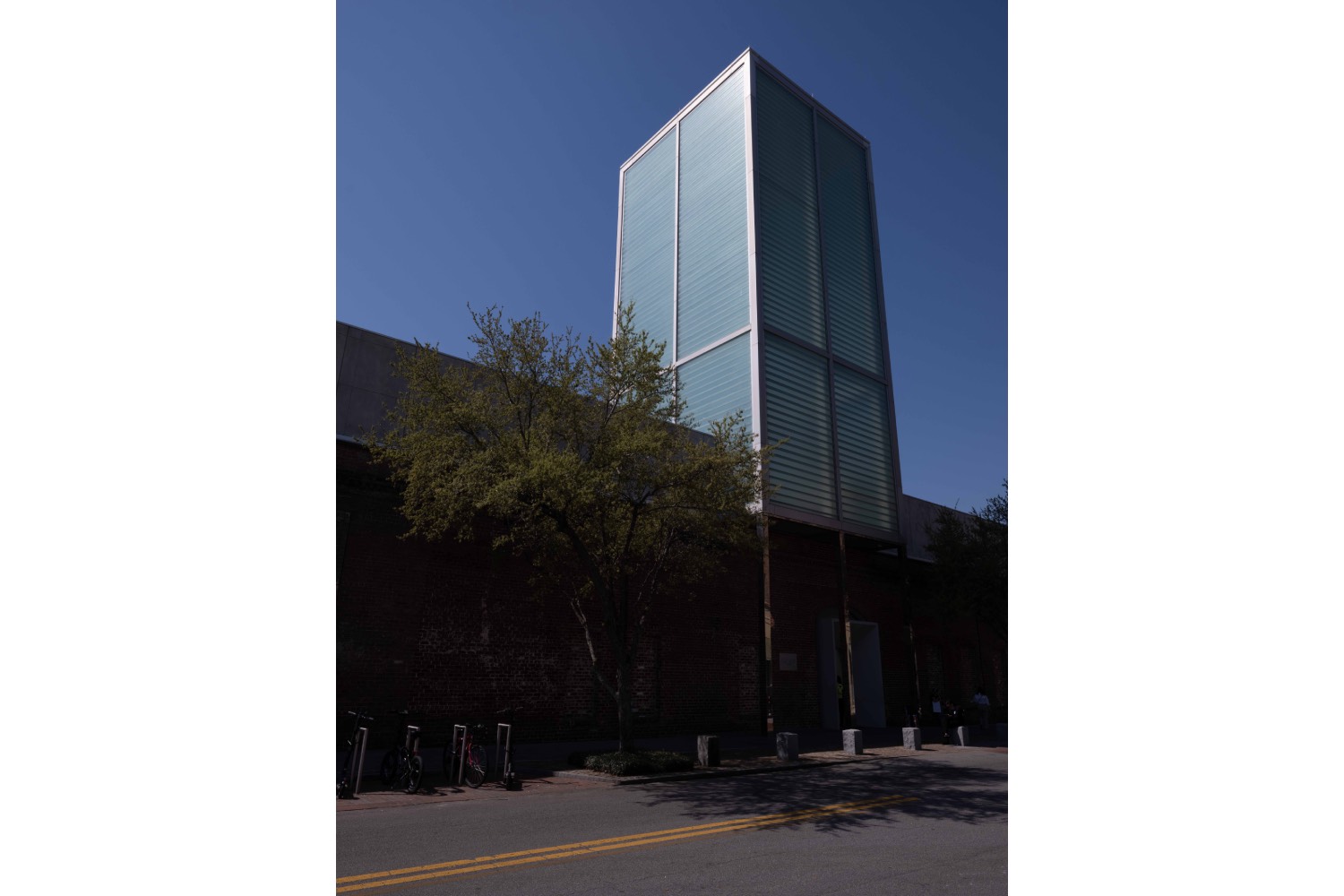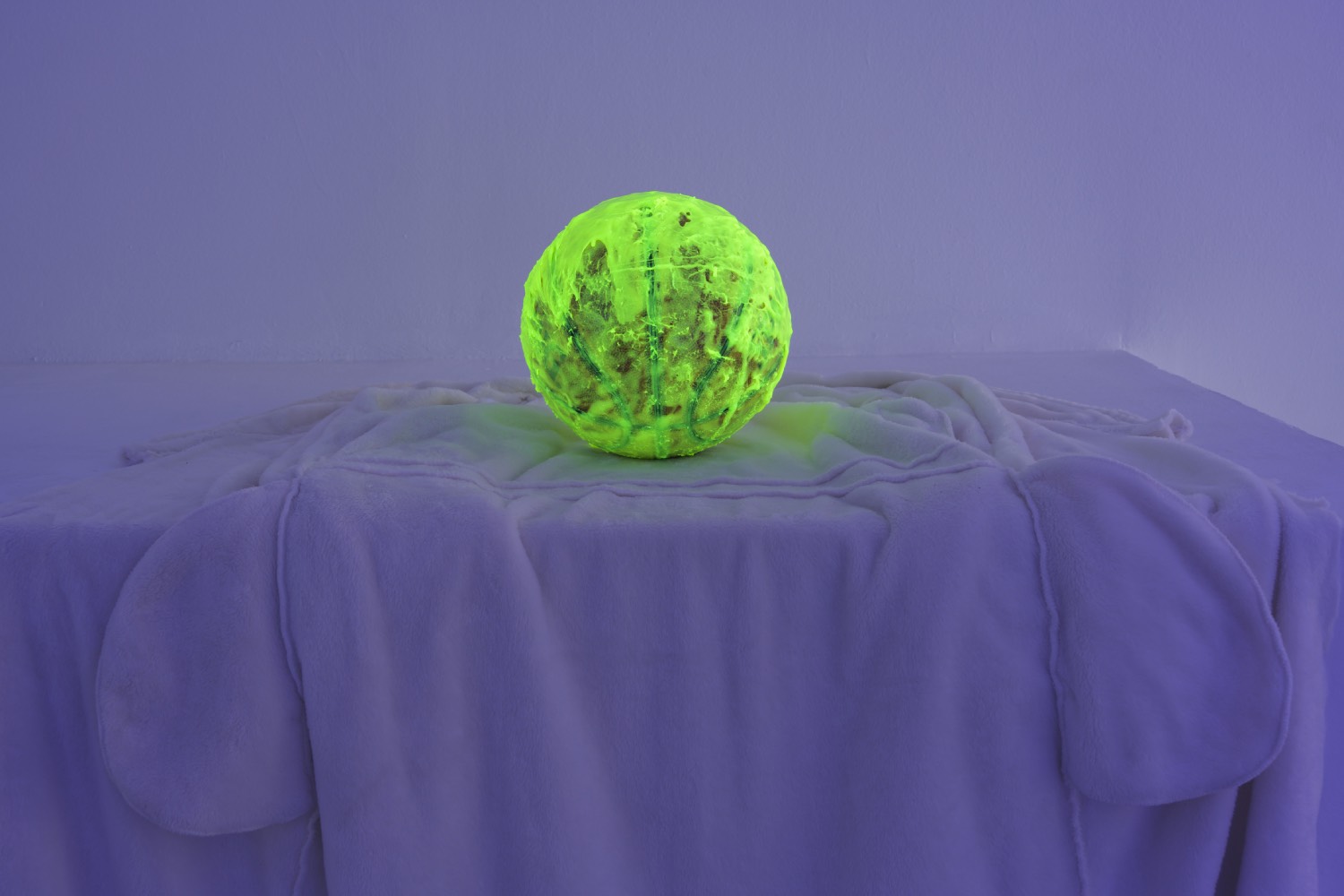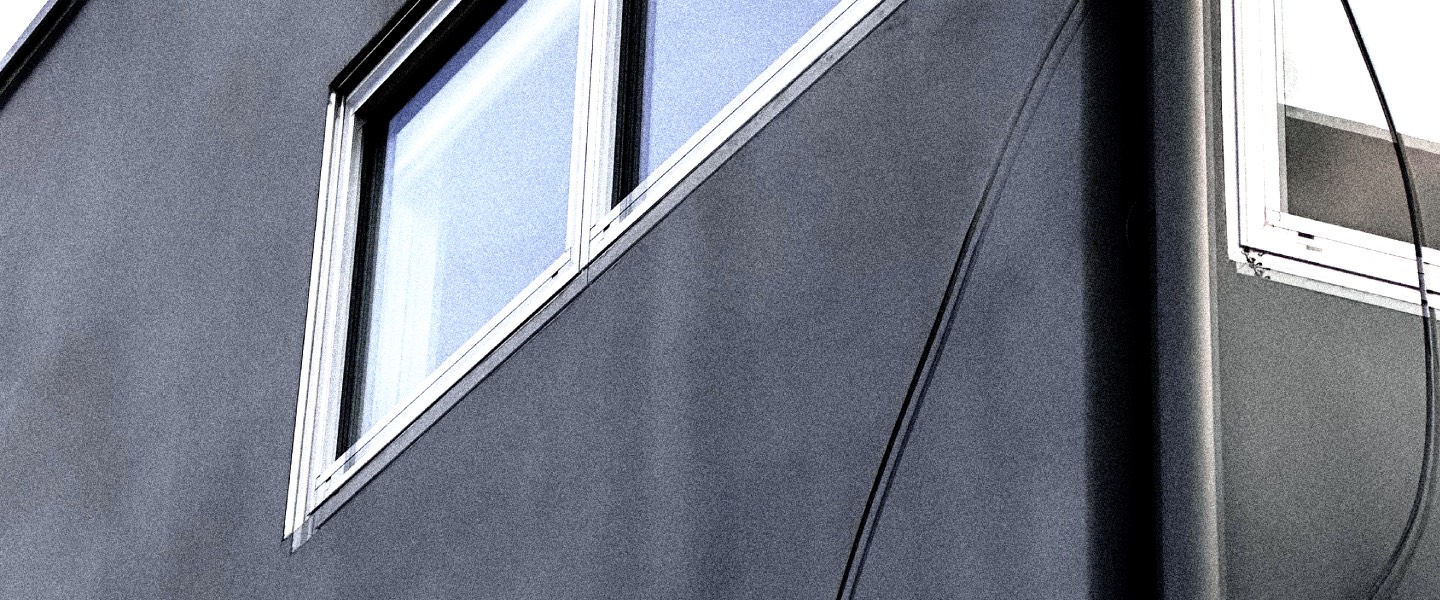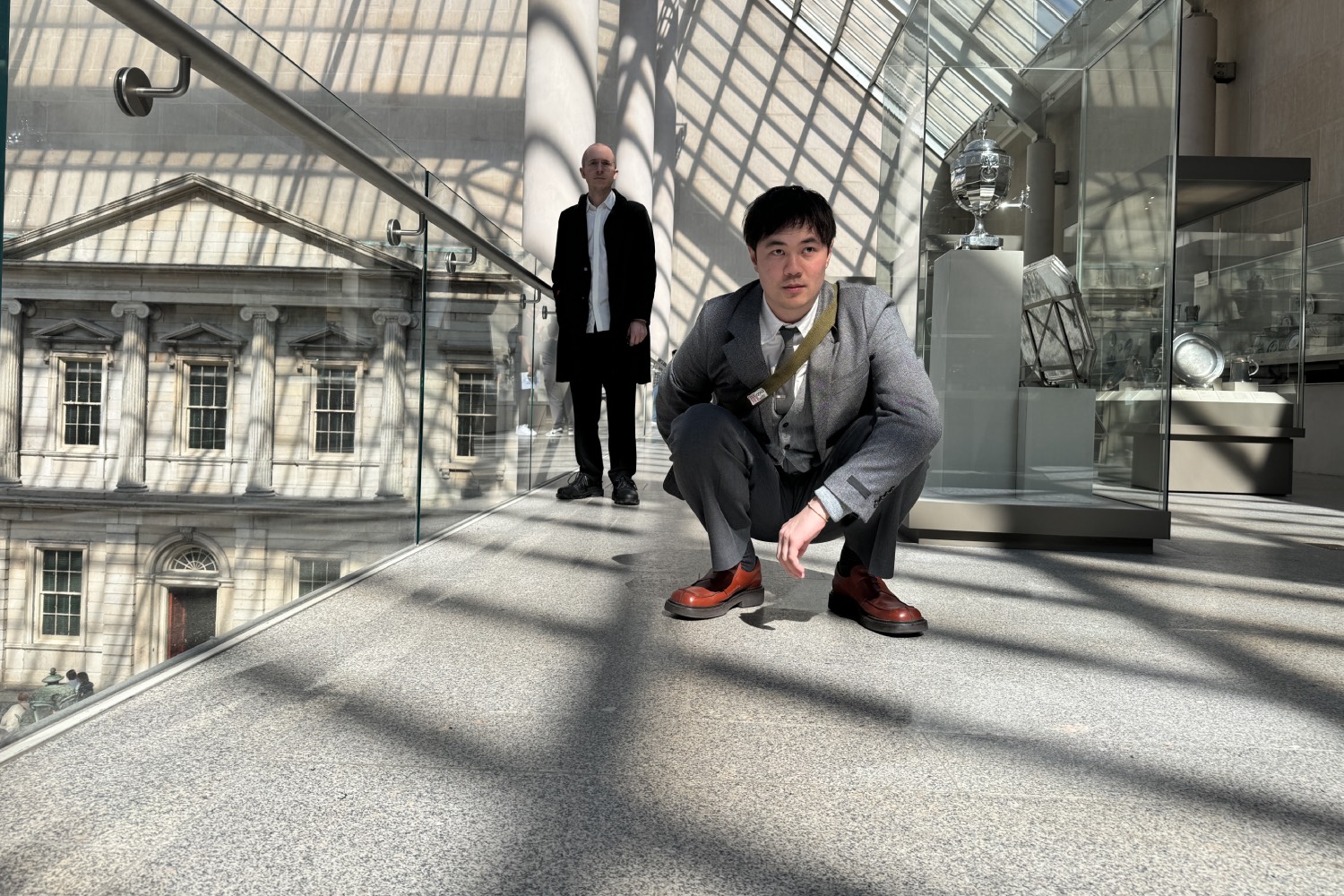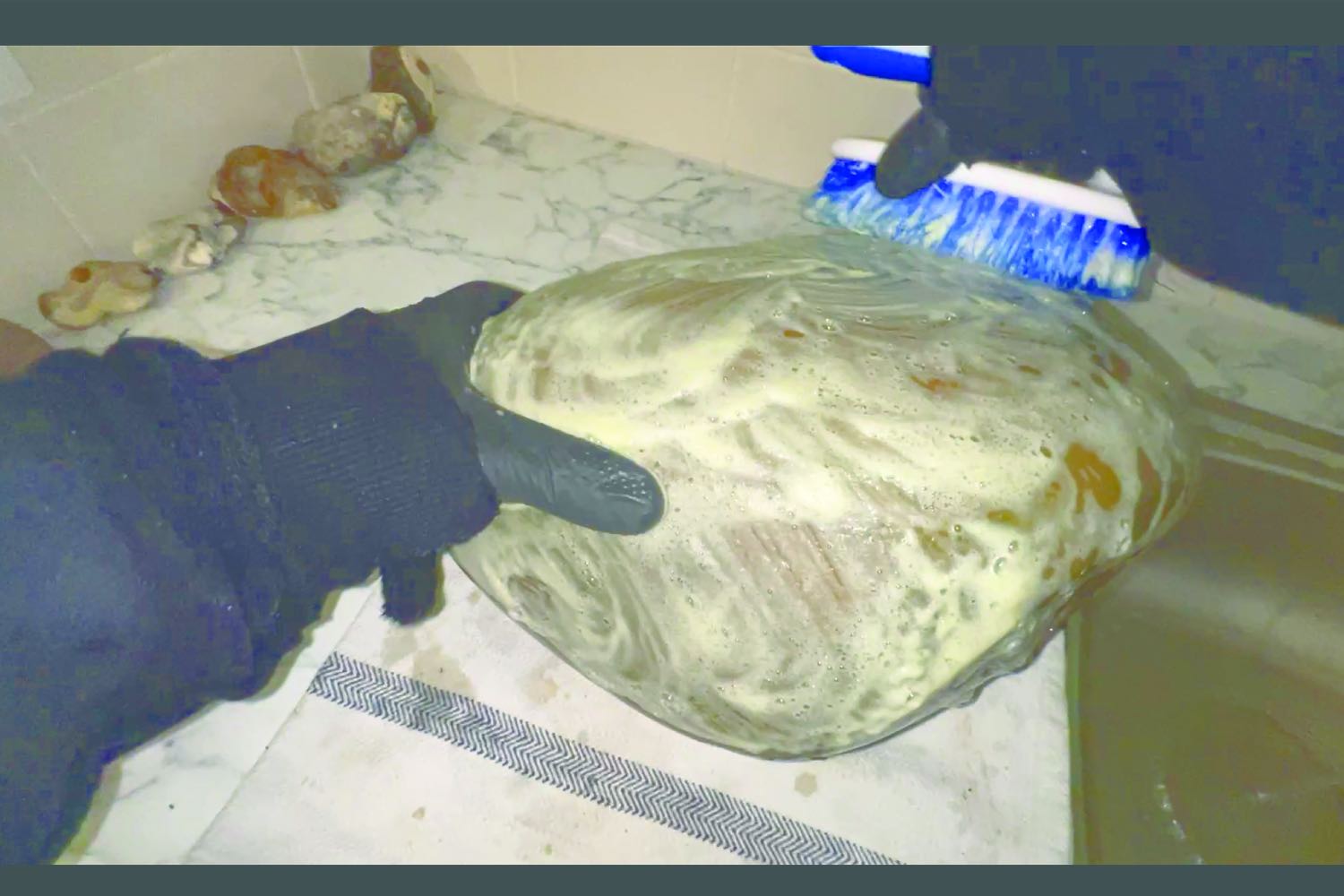At the Savannah College of Art and Design’s Museum of Art, curators will agree that the Pamela Elaine Poetter Gallery is the institution’s most distinctive space for exhibitions. Running 290 feet long, the space reads more like a corridor than a gallery, flanked by the novel materials of historic nineteenth-century brick on one wall and glass on the other, where exterior louvers only partially mediate the flow of natural light. The space flouts the conventions of gallery exhibition as laid out by the critic Brian O’Doherty in his formative text Inside the White Cube: The Ideology of the Gallery Space (1976), in which he noted the main purpose of a rigorously and hermetically sealed space of white, windowless walls and overhead lighting: “The outside world must not come in.”
The Poetter Gallery is one of several spaces in the museum that do not conform to this model, a result of its deference to the museum’s historical architecture. The gallery’s brick wall was the facade of a railway warehouse built in 1853, later purchased by SCAD in 1991. Primarily known for its professionally oriented curriculum, the university is also known for historic buildings like these throughout Savannah. Following a thorough renovation by architect and SCAD professor Christian Sottile alongside the vision of SCAD president and founder Paula Wallace, the university reopened the building as its teaching museum in 2011. What’s notable about the project is the adherence to historical precedent, with his physical and symbolic references to the original building, neoclassical civic architecture, and Vitruvian proportions. The eighty-six-foot-tall, glass-and-steel lantern above the entrance, for example, recalls the many church towers spiking Savannah’s skyline, and its height was set deliberately at four times that of the original building. What’s also notable are the ways in which curators and artists have creatively worked with and around the unique character of the building. According to museum chief curator Daniel S. Palmer, “those elements play a tremendous role in the conception and curation of the exhibitions themselves.”
SCAD had essentially purchased a ruin: after five decades of disuse, the original long and narrow warehouse had essentially crumbled into piles of loose Savannah gray brick. Often handmade by enslaved people from an American South-specific composition of soil, the preservation of these bricks was central to Sottile’s historically reverent approach, and they were left standing wherever possible. The resulting exterior is a collage of opposing elements — old and new, rough and slick — where jagged fragments of the original nineteenth-century brick walls are bolstered by the glossy markers of modernity: glass, steel, and polished concrete.
As on the exterior, flourishes of the original building intermittently appear throughout the contemporary interiors, with the occasional brick archway between galleries, or bits of the original heart-pine timber. But certain particularities leave behind especially nontraditional proposals for the exhibition of art. One notable example is the series of street-facing arches of the original brick walls that Sottile encased in shallow glass vitrines, creating public-facing exhibition spaces. Another is the Poetter gallery, which similarly formed when the architect extended the warehouse’s rear facade by adding a glass curtain wall. Over the years, various artists have embraced the uniqueness of these spaces, sparking a mutual transformation between the architecture and their work. The ghostlike figuration of Elaine Cameron-Weir’s suspended clothing sculptures highlighted the window arch’s hauntingly nave-like qualities in her 2022 SCAD MoA exhibition “Dressing for Windows (Exploded View) or ‘everywhere I go people know the part I’m playing.’” In “The Future Was Then” (2016), Daniel Arsham erected a series of faux-concrete panels in the Poetter Gallery, effectively boring a jagged tunnel through them that eventually traced the silhouette of the human form.
The architecture’s commitment to tradition has elicited nontraditional displays of art, which is a good thing: there’s a specific lifelessness in a space untouched by dirt, natural light, time, or other markers of reality, and O’Doherty seemed to agree. In galleries like these, “art exists in a kind of eternity of display,” he wrote. “This eternity gives the gallery a limbolike status; one has to have died already to be there.” Given its current status as the “correct” format for artistic display, it’s also worth noting that the white cube is not only a construct but a recent one, having emerged in the early twentieth century alongside modernist painting. Both art and institutions have continued to evolve since then, particularly in the ways that they engage with the “outside world.”
Solo exhibitions by artists including Awol Erizku, Cammie Staros, Cindy Ji Hye Kim, Iván Argote, and Cao Fei are now on view in the SCAD museum’s main galleries, which due to the narrowness of the building proceed in a railroad configuration — that is, one gallery directly after another. Although these spaces easily conform to the standard parameters of the white cube, different elements of color, texture, or spatial composition prevent a sense of monotony as one gallery flows into the next. Throughout, the artists have taken their considerations of their own work beyond the borders of the frame, where art takes on the immersive spatial qualities of design. Erizku’s photography and sculpture are tied to his concepts of Afro-esotericism, an aesthetic continuity between African diasporas in specific opposition to Eurocentric art history. Naturally the black, green, and red walls of his exhibition are better suited to foregrounding his work than white ones. Argote’s video performance and paintings of overthrown colonial monuments thematically lend themselves to the disruption of the white cube, which he offers in a floor of red-tinted concrete, the uneven texture of which immediately calls the viewer’s attention.
The last stop on the railroad of galleries is Cao Fei’s solo exhibition “At the Edge of Superhumanity,” where her works have undergone slight adaptations in the Poetter Gallery; these include reprinting photographs from her cosmonaut film Nova (2019) with a matte texture that won’t reflect the natural light coming through the glass walls. Across three galleries, however, her exhibition neither starts nor ends in the white cube. Visitors arrive in a reproduction of a midcentury Chinese movie theater lobby, where the linoleum flooring and teal paint recall the era’s Sino-Soviet kitsch. Based on the Hongxia Theatre, which served as the artist’s studio in Jiuxianqiao for many years, Fei’s recurring, scene-setting installation functions much like a cinema lobby in real life. It’s an antechamber ahead of one’s immersion in the world that the artist built, a space to work up the suspension of one’s disbelief. Through a pair of red velvet curtains, the screening room of two of the artist’s video works — Nova and MatryoshkaVerse (2022), a geopolitical exploration through matryoshka-themed amusement parks — is painted with the green stripes of the Chinese Eastern Railway, which incidentally resonates with the museum’s origins. The exhibition continues into the Poetter Gallery, where giant blow-up matryoshka dolls and banners prolong the fantasy. Fei’s is the kind of immersive, world-building practice that fundamentally shapes the space it’s in, not the other way around. For artists working in this vein, the Poetter Gallery’s unusual configuration offers a world of potential.

